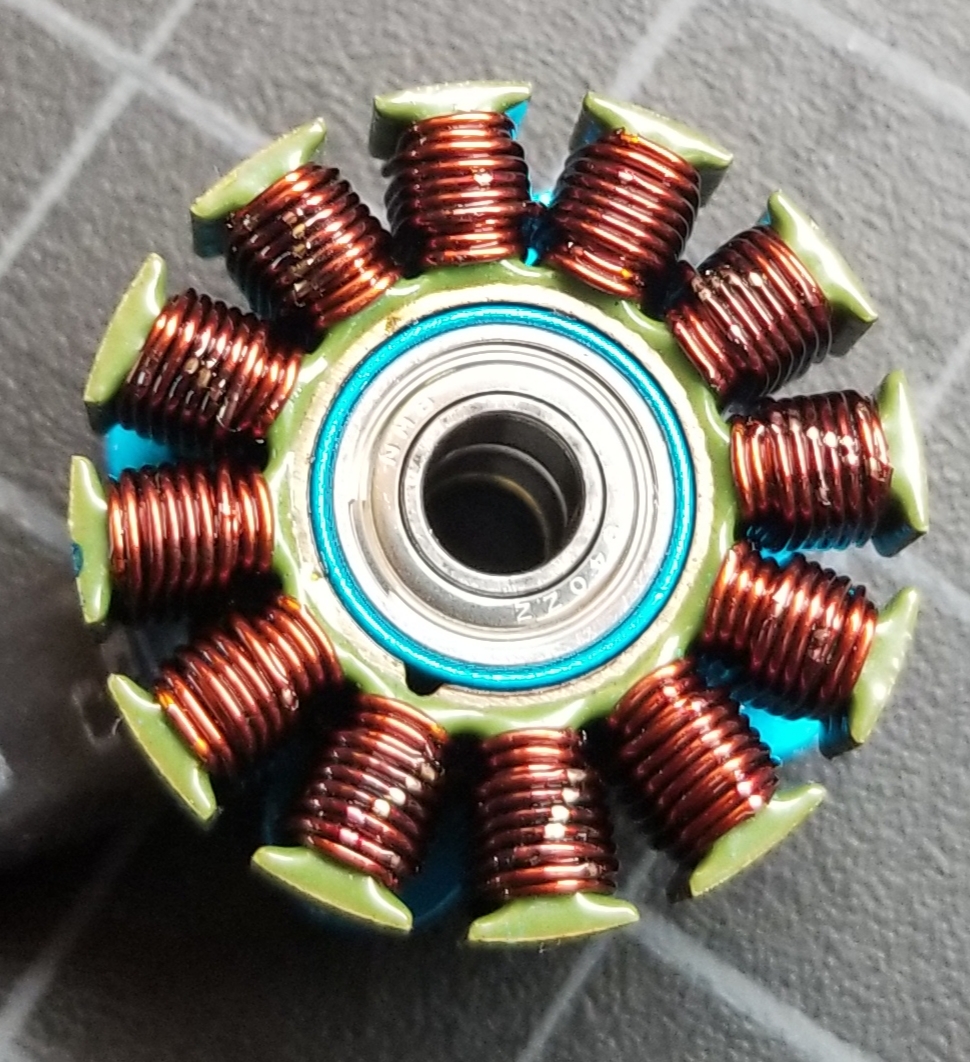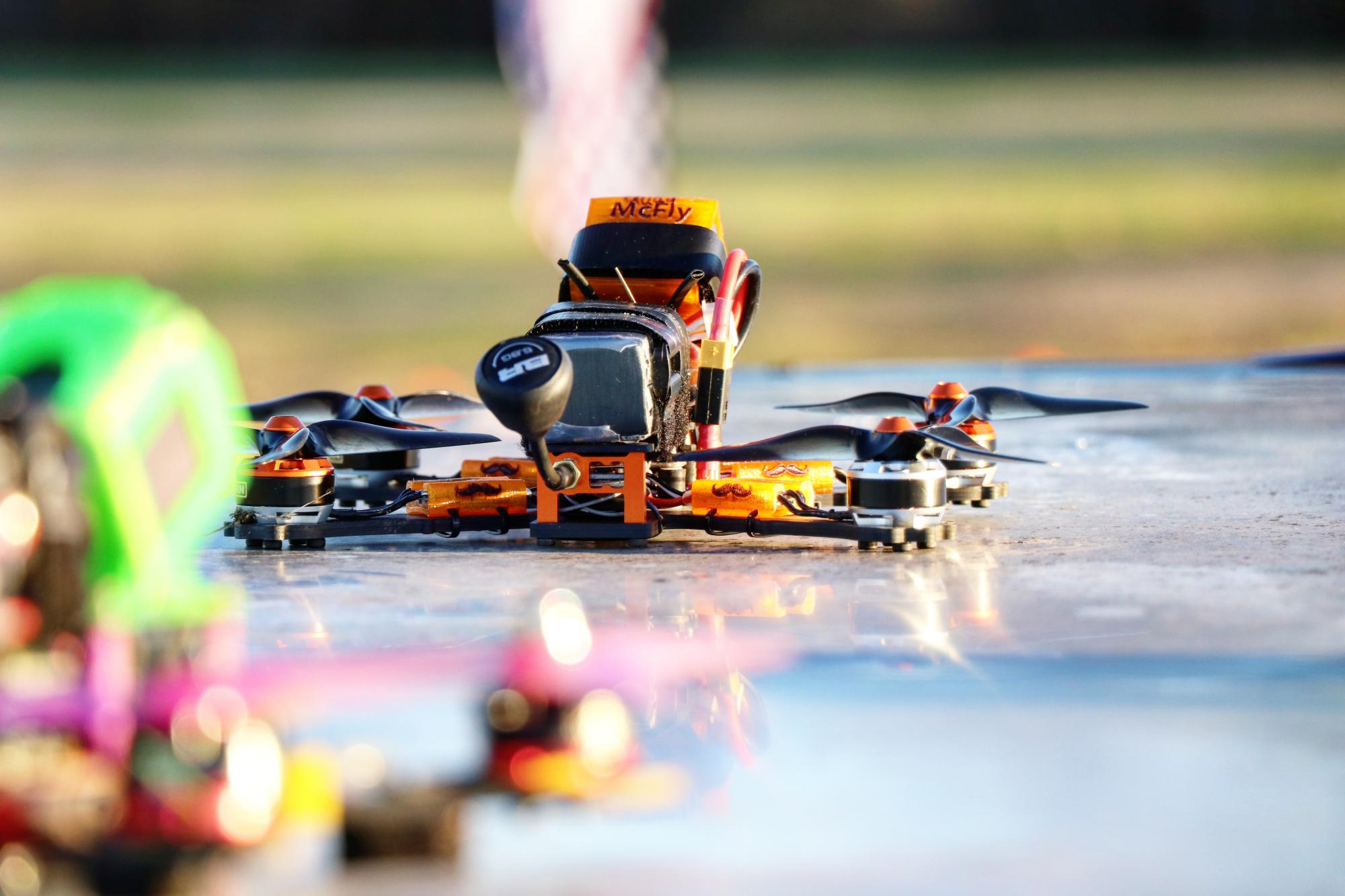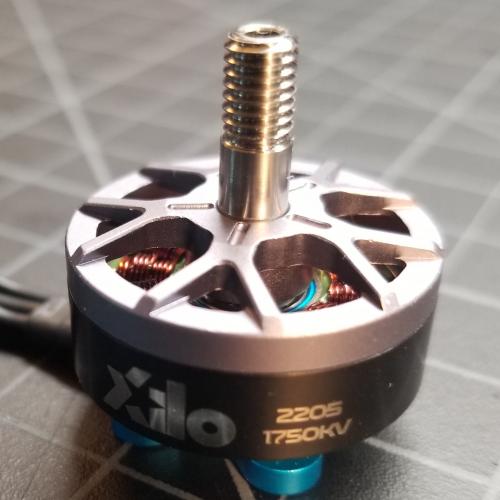- Home >
- Results >
- Motor Tests >
- Low KV >
- Xilo 2205 1750KV
A good lightweight racer option. Don't over prop it.
Check out the full list of motors in this series here
Summary
The Xilo motors are marketed by GetFPV as a “Top level racing motor at an affordable price”.
Construction uses a 4 mm hollow shaft that is pressed into the bell. Bearings are 4x9 mm The naked bottom base uses a set screw (as opposed to a clip) to hold it all together. The bell itself has light marks on it for prop retention, but they don’t look particularly substantial. The stators measured at 5.3 mm tall with a set of calipers, and the magnets are ~5mm tall (a bit harder to measure accurately with a ruler while they’re still in the bell). It weighs in at 24.8 g with the wires cut short (individual ESC lenght short), and 27.5 g with the entire 15 cm wires intact, which saves ~5 g per motor over similar 2207/2305 options.

During testing, we tend to start with lighter props and move to heavier pitched ones. On this test, we had to stop after the HQ V1S 5x4.8x3, because the resin that insulates windings started to melt:
Motors will usually pull a fair amount less current in the air than on the bench, but let this be a reminder that mid-kv motor with a 2205 stator isn’t necessarily designed to push big monster pitched props. 1750 is mid-high KV on a 6s setup. The best application for this motor would be a lightweight racing build with 5x4.3x3, 5x4.5x3, 5.1x4.1x3, etc. It is still fairly common to see higher KV motors with lighter pitched props for racing, and this motor would fit into that category.
Thrust data is on par with the Catalyst / Brother Hobby 2205 1750 and other motors in its class. The Xilo is slightly more thrusty, (about 40g more on an HQ V1S 5x4.3x3), and draws about 1-1.2 A more current. Compare that to the BrotherHobby 2207 1660, which makes 100g more thrust, for 1A less than the Xilo, but costs almost 6 g more in motor weight.
This motor has a good application in a lightweight, skinny armed racer spinning shallow props very quickly. It should allow for a sub- 250g (dry) weight, and will also allow you to run a smaller battery than a beefier motor would. Less weight = less momentum in corners, easier to correct for mistakes, faster (in some applications).










































